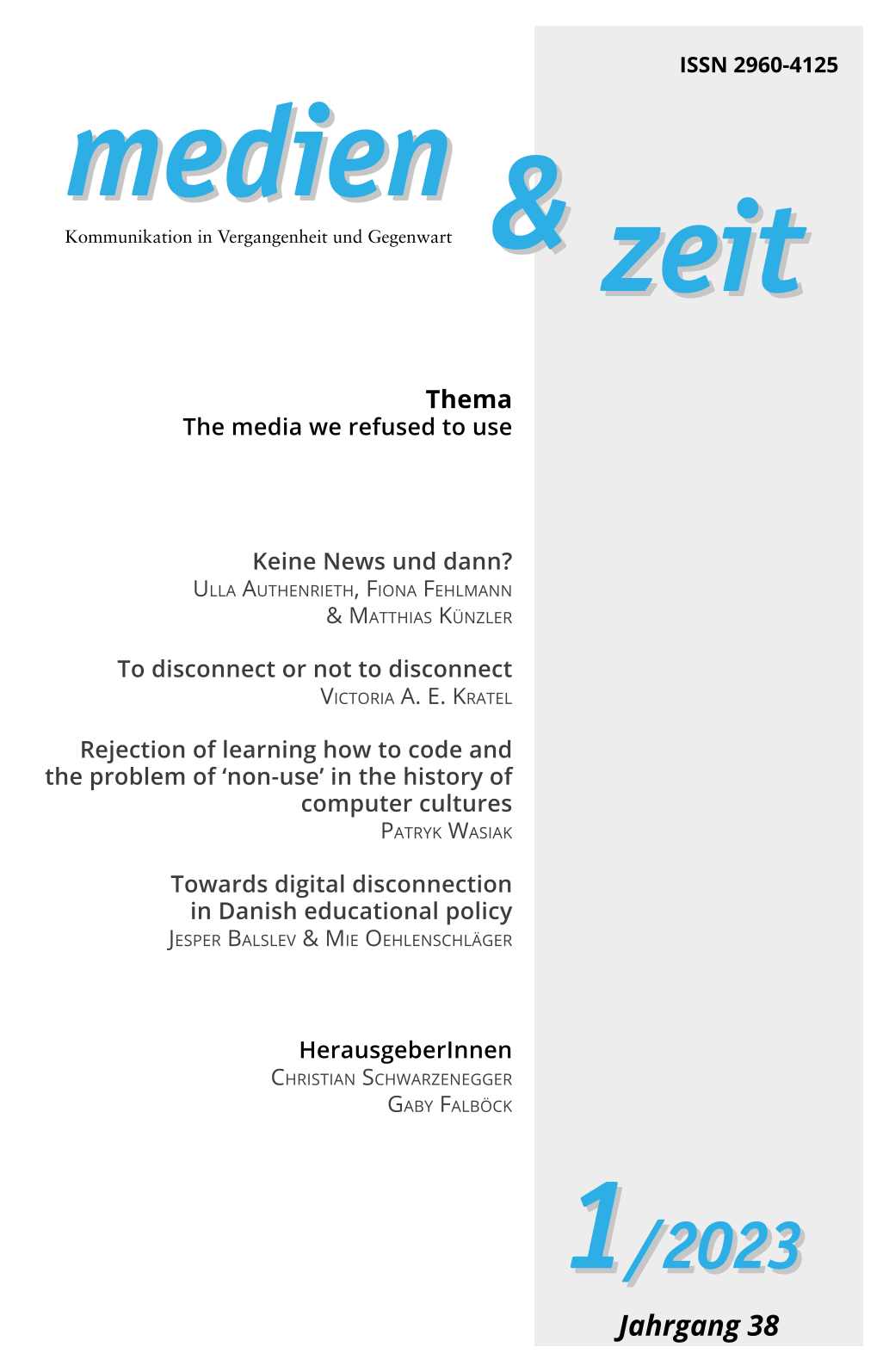To disconnect or not to disconnect
A question negotiated between unequal structures and different scopes of personal agency
Keywords:
digital disconnection, self-determined media use, homo disconnectus, structure and agency, right to disconnect, gender, feminism, social classAbstract
In the “digital age” (Ahmed, 2020) and its “constant connectivity” (Couldry & Hepp, 2017), the countertrend of digital disconnection is gaining momentum in both popular culture and academia. And although media non-use practices seem more relevant than ever, not everyone is able to self-determine their media use. This scholarly essay seeks reasons for the unequal access to digital disconnection. The theoretical basis is provided by contributions of Pierre Bourdieu and Anthony Giddens to the structure and agency debate. Building on this, I introduce the fictitious agent of homo disconnectus, who is given maximum agency and the best structures to digitally disconnect. The homo disconnectus thus serves as a tool to illustrate contrasts between privileges and marginalization. A deeper examination of gender and class reveals that digital disconnection is particularly difficult for women and low-income earners. Therefore, I conclude that research should not focus solely on digital disconnection that is already practiced but should also closely investigate where and why it cannot take place.
Downloads
Published
How to Cite
License
Public access to articles in the journal medien & zeit is free of charge, at no charge to authors, and is available to all readers under the Creative Commons Attribution-NonCommercial-NoDerivatives 4.0 license. The rights for the contributions belong to the respective authors (no apc).



